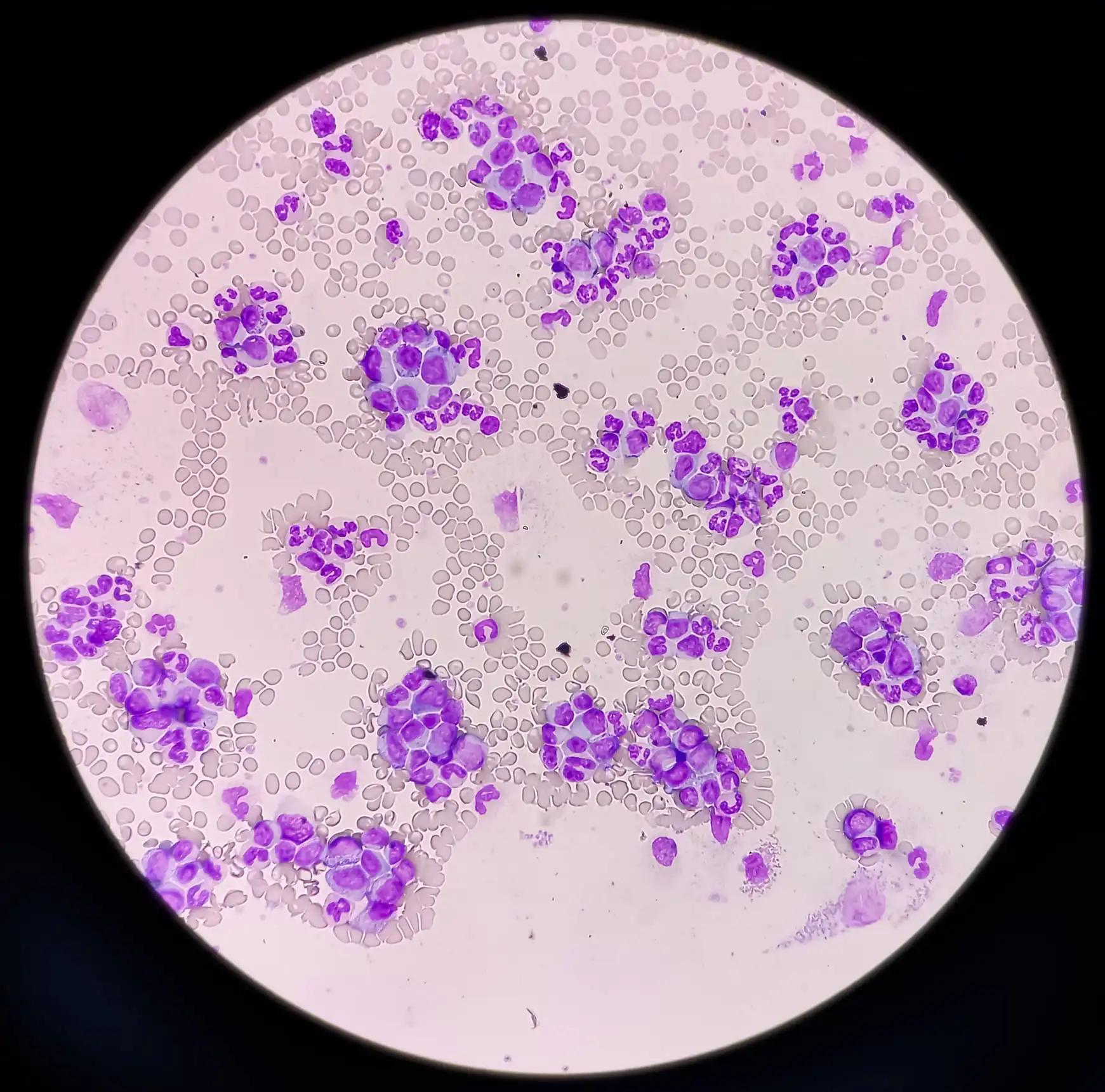KEY TAKEAWAYS
- The study aimed to investigate miR-629-5p expression in EVs from imatinib-sensitive and resistant CML cells.
- Researchers found that EVs from IM-resistant CML cells activate the SENP2/PI3K/AKT/mTOR pathway in sensitive cells, inducing IM resistance.
Imatinib (IM) is the standard treatment for patients with chronic-phase chronic myeloid leukemia (CML-CP). However, the emergence of resistance to IM in patients with CML-CP has become an increasing concern.
Yaqin Jiang and the team aimed to explore the role of miR-629-5p in extracellular vesicles (EVs) derived from both IM-sensitive (K562) and IM-resistant (K562-Re) CML cell lines. Specifically, the research investigates how altering the expression of miR-629-5p affects the biological behavior of K562 and K562-Re cells. Understanding this mechanism could provide insights into the development of resistance and offer potential strategies for overcoming it.
They performed an inclusive analysis to assess miR-629-5p expression levels in both IM-sensitive and resistant CML cell lines. They isolated EVs and verified their presence. EVs from K562-Re cells were then co-cultured with K562 cells to measure miR-629-5p expression levels. Target genes of miR-629-5p were identified and validated through luciferase reporter assays.
Further experiments involved manipulating miR-629-5p expression in the cells using transfection techniques. The expression levels of phosphorylated proteins in the PI3K/AKT/mTOR signaling pathway were examined following IM treatment in CML cell lines.
Additionally, in K562-Re cells, the expression levels of phosphorylated proteins in the PI3K/AKT/mTOR pathway were analyzed after single transfection with a miR-629-5p inhibitor and cotransfection with both a miR-629-5p inhibitor and siSENP2.
About the results, increasing concentrations of EVs from K562-Re cells led to elevated miR-629-5p expression levels. The expression of miR-629-5p in CML cells varied with different IM concentrations, influencing the biological characteristics of the cells. SENP2 was identified as a target gene of miR-629-5p. Furthermore, miR-629-5p was found to modulate the SENP2/PI3K/AKT/mTOR pathway, thereby impacting IM resistance in CML cells.
The study concluded that EVs from IM-resistant CML cells alter miR-629-5p expression in sensitive cells, activating the SENP2/PI3K/AKT/mTOR pathway and contributing to the development of IM resistance.
This work was supported by Doctor Foundation of Guizhou Provincial People’s Hospital (No. GZSYBS[2019]03), The Science and Technology Project of Health Planning Commission of Guizhou Province (No. 2021-153), Science and Technology Plan Project of Guizhou Province (No. 2022-269).
Source: https://pubmed.ncbi.nlm.nih.gov/39056503/
Jiang Y, Xiao S, Huang S, et al. (2024). “Extracellular vesicle-mediated regulation of imatinib resistance in chronic myeloid leukemia via the miR-629-5p/SENP2/PI3K/AKT/mTOR axis.” Hematology. 2024 Dec;29(1):2379597. doi: 10.1080/16078454.2024.2379597. Epub 2024 Jul 26. PMID: 39056503.



